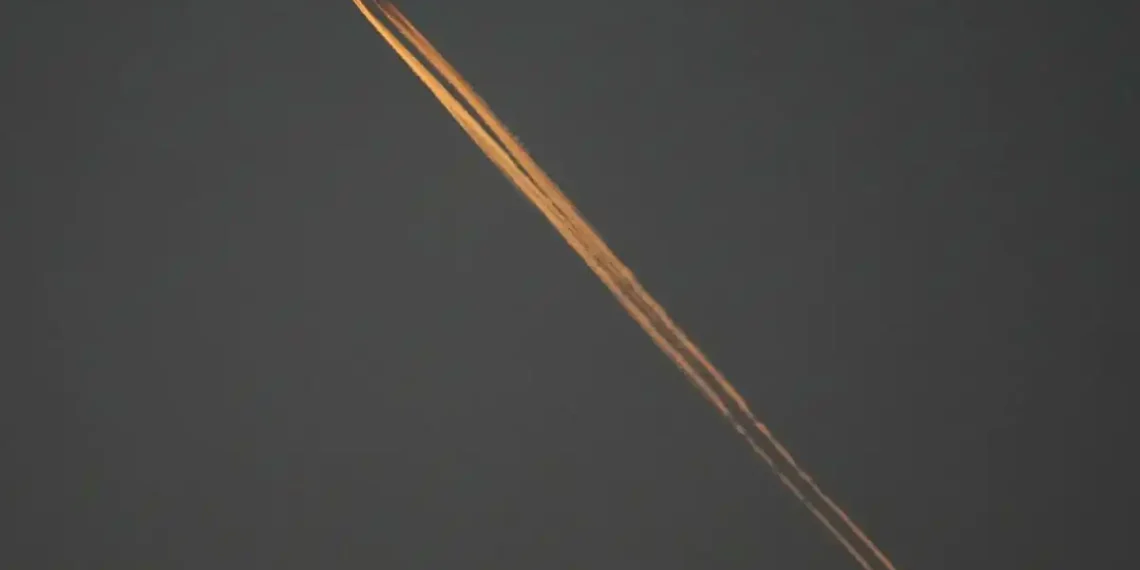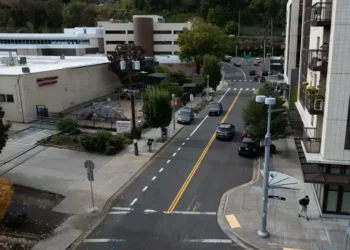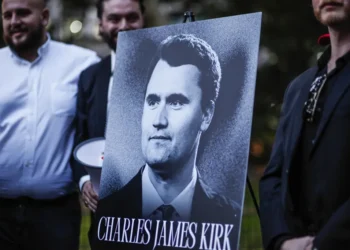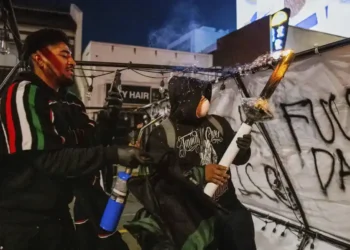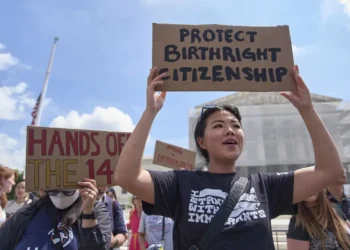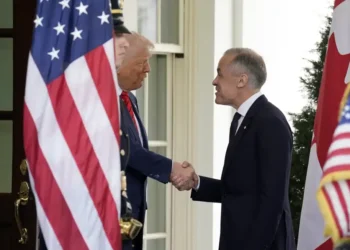From Sky Trails to State Laws: How a Debunked Conspiracy Theory Is Influencing U.S. Policy
BATON ROUGE, La. — When Louisiana State Rep. Kimberly Landry Coates stepped up to the podium to present her bill banning chemical spraying in the skies, she knew it might raise eyebrows.
“This might seem strange,” she warned her colleagues.
To some, it did more than that. As she called on fellow lawmakers to “start looking up,” Coates invoked the widely debunked chemtrail conspiracy theory—the belief that the white lines left behind by aircraft are not ordinary vapor trails, but intentional chemical releases with sinister goals ranging from mind control to climate manipulation.
Despite being thoroughly discredited by the scientific community, this theory is now making its way into formal legislation in states like Louisiana, Tennessee, Florida, and over a dozen others. The proposed laws aim to prohibit intentional atmospheric chemical releases—despite no verified evidence that such programs even exist.
But for researchers, educators, and media literacy advocates, the shift from online fringe to official lawmaking is more than a curiosity—it’s a red flag.
“Every bill like this gives undue weight to misinformation,” said Donnell Probst, interim executive director of the National Association for Media Literacy Education. “It tells people these conspiracies deserve to be debated like real issues. That’s dangerous.”
How Did We Get Here? The Origins of the Chemtrail Myth
The chemtrail theory first gained traction in the late 1990s, after a 1996 U.S. Air Force report titled Weather as a Force Multiplier: Owning the Weather in 2025 began circulating online. Though speculative and clearly labeled as fiction, conspiracy theorists latched onto it as supposed proof of government weather control efforts.
The theory quickly snowballed, with some claiming the long, lingering trails behind aircraft were evidence of secret chemical spraying programs. These claims blurred the line between chemtrails and contrails—the latter being harmless condensation trails formed when jet engine exhaust meets cold, moist air at high altitudes.
“Contrails are mostly water vapor,” explained Ken Leppert, atmospheric science professor at the University of Louisiana Monroe. “They’ve existed since the beginning of jet travel. There’s no malicious intent behind them.”
Despite decades of scientific consensus and government transparency efforts, belief in chemtrails persists. A 2016 peer-reviewed study in Environmental Research Letters found that 76 of 77 atmospheric scientists surveyed had seen no evidence whatsoever supporting claims of a large-scale, secret atmospheric spraying program.
Real Science Misused—and Misunderstood
In their push to regulate atmospheric spraying, many lawmakers have cited real but unrelated scientific fields—often confusing or misrepresenting them.
Take cloud seeding, for instance. It’s a method used in some regions to increase rainfall by dispersing particles (often silver iodide) into clouds. But it’s far from widespread and has never been practiced in Louisiana.
“Cloud seeding is extremely limited in its effectiveness,” Leppert said. “It’s not a tool for weather control—it’s more like nudging clouds under the right conditions. Louisiana doesn’t even issue permits for it.”
Then there’s geoengineering, which includes hypothetical methods for slowing climate change—such as solar radiation modification (SRM), which proposes reflecting sunlight to cool the planet. Though this idea is being studied in early-stage reports, no such programs are active or approved.
Coates, however, held up government planning documents on SRM as proof of atmospheric interference, ignoring the fact that these reports are speculative and publicly available.
The Political Echo Chamber
The chemtrail theory’s migration from internet forums to legislative chambers didn’t happen in a vacuum. It’s been amplified by high-profile political figures and celebrities who lend it mainstream visibility.
Robert F. Kennedy Jr., who is running for president as an independent, has repeatedly trafficked in conspiracy narratives, including those related to vaccines and environmental manipulation. Rep. Marjorie Taylor Greene has also echoed chemtrail concerns publicly.
And in Florida, a bill similar to Louisiana’s drew support from Marla Maples, the ex-wife of Donald Trump, who cited a rise in Alzheimer’s as her reason for getting involved.
When a Democratic state senator asked Maples if she knew anyone in the federal government who might help address the issue, she smiled and said, “I sure do.”
These endorsements, however informal, further blur the line between anecdote and evidence—and lend political weight to scientifically baseless claims.
Symbolic Bills, Real Costs
While some lawmakers frame these bills as precautionary or symbolic, critics say the symbolism sends the wrong message—especially when real public health and environmental challenges remain unaddressed.
Louisiana, for example, struggles with some of the nation’s highest poverty, incarceration, crime, and maternal mortality rates. Democratic Rep. Denise Marcelle didn’t hold back in her critique of the chemtrail bill.
“We owe the people of Louisiana better than this,” Marcelle said. “We should be solving problems we can actually see—not chasing ones that aren’t real.”
Even if such legislation carries no practical enforcement, experts worry it gives false narratives a platform, saps attention from critical policy needs, and misleads the public into thinking fabricated issues are matters of legitimate concern.
“It’s not just about one bill,” said Probst. “It’s about the larger trend of misinformation becoming legislation. And that should worry all of us.”
The Bigger Picture: Misinformation in the Mainstream
The chemtrail debate isn’t just about what’s happening in the sky. It’s a reflection of what’s happening on the ground—in statehouses, on social media, and in public discourse.
As lawmakers increasingly face pressure from constituents influenced by online misinformation, the line between conspiracy and policy continues to blur. And in that blur, experts say, democracy is at risk.
“We need science-informed policymaking now more than ever,” said Leppert. “Not just to deal with real environmental challenges, but to protect the integrity of our legislative process.”
This article was rewritten by JournosNews.com based on verified reporting from trusted sources. The content has been independently reviewed, fact-checked, and edited for accuracy, neutrality, tone, and global readability in accordance with Google News and AdSense standards.
All opinions, quotes, or statements from contributors, experts, or sourced organizations do not necessarily reflect the views of JournosNews.com. JournosNews.com maintains full editorial independence from any external funders, sponsors, or organizations.
Stay informed with JournosNews.com — your trusted source for verified global reporting and in-depth analysis. Follow us on Google News, BlueSky, and X for real-time updates.
